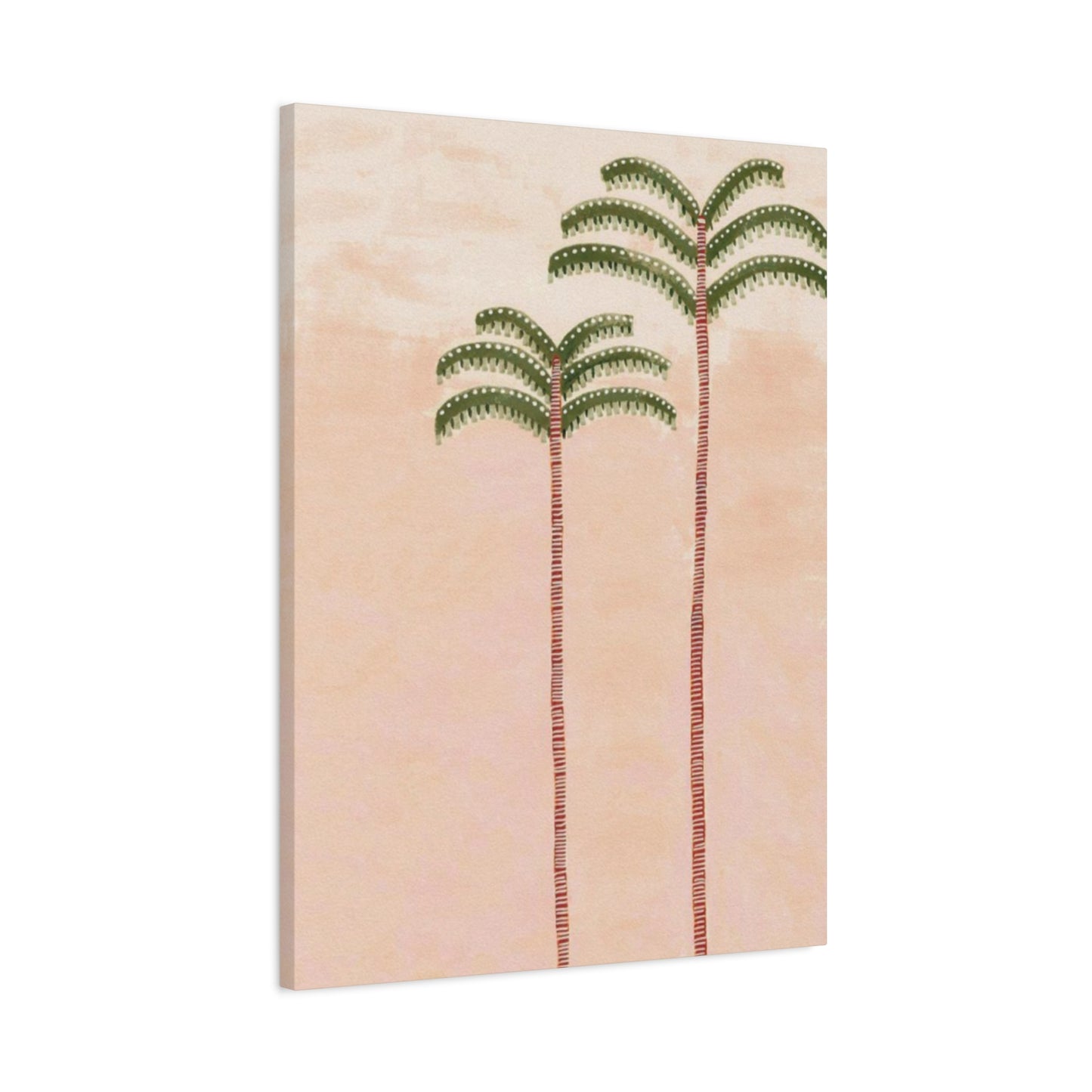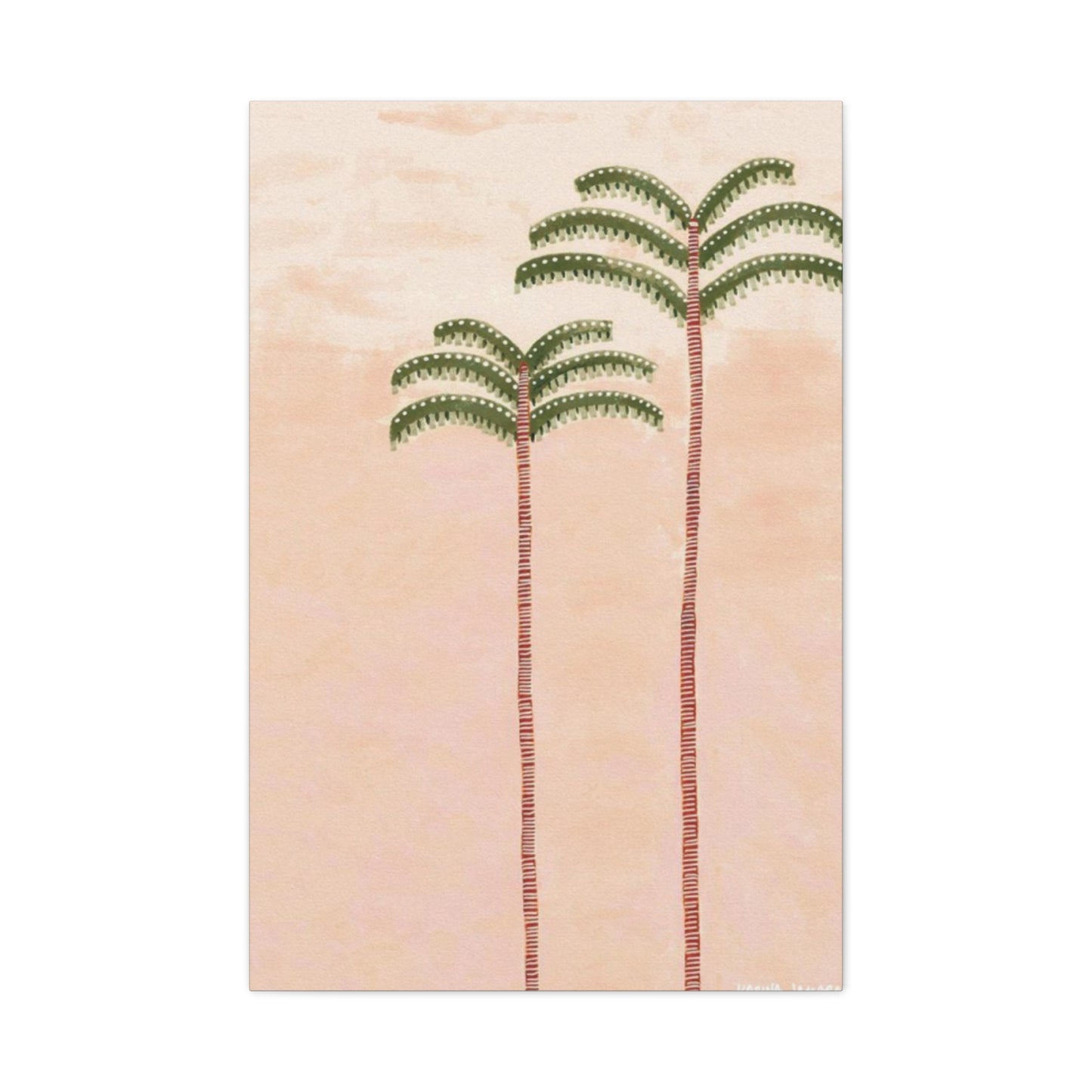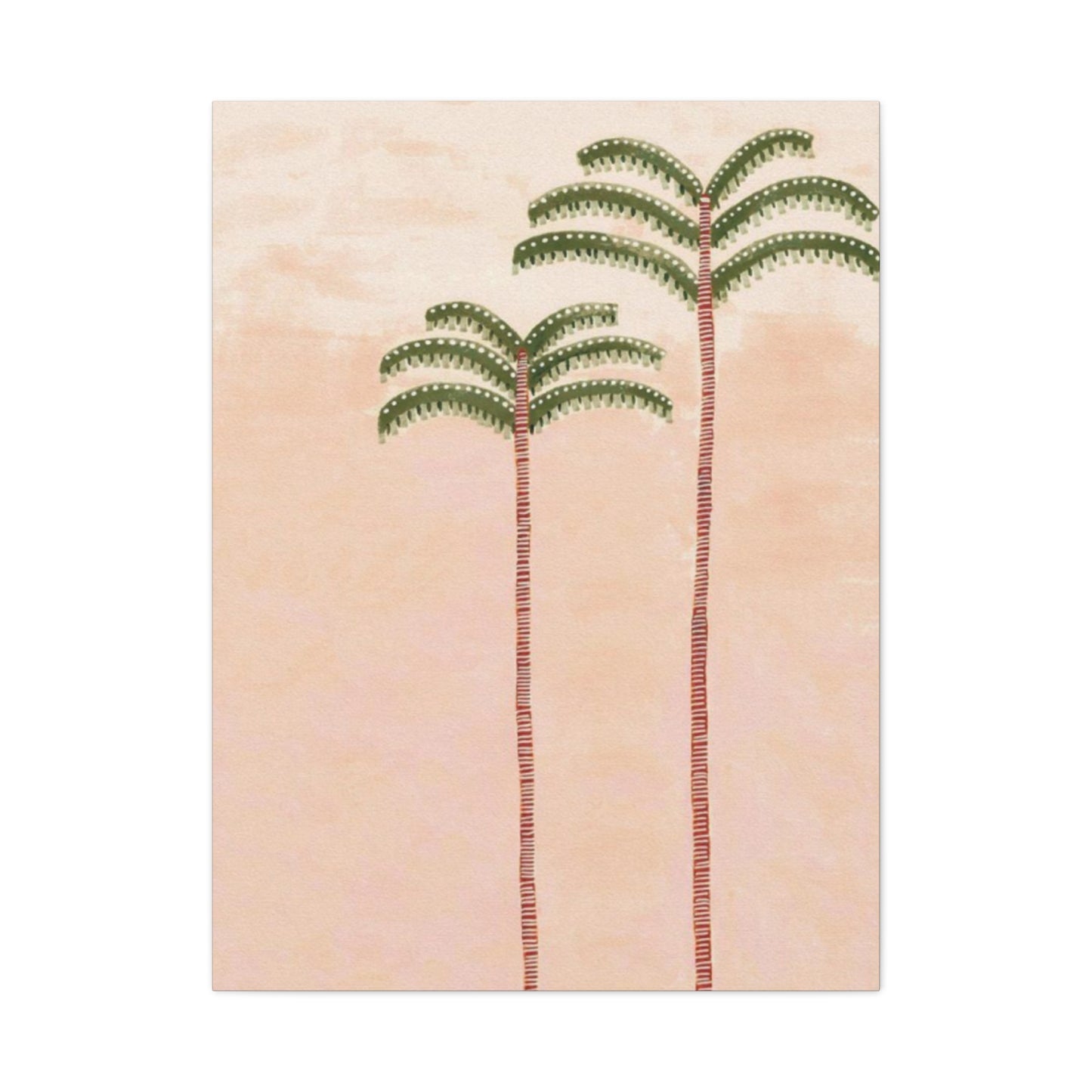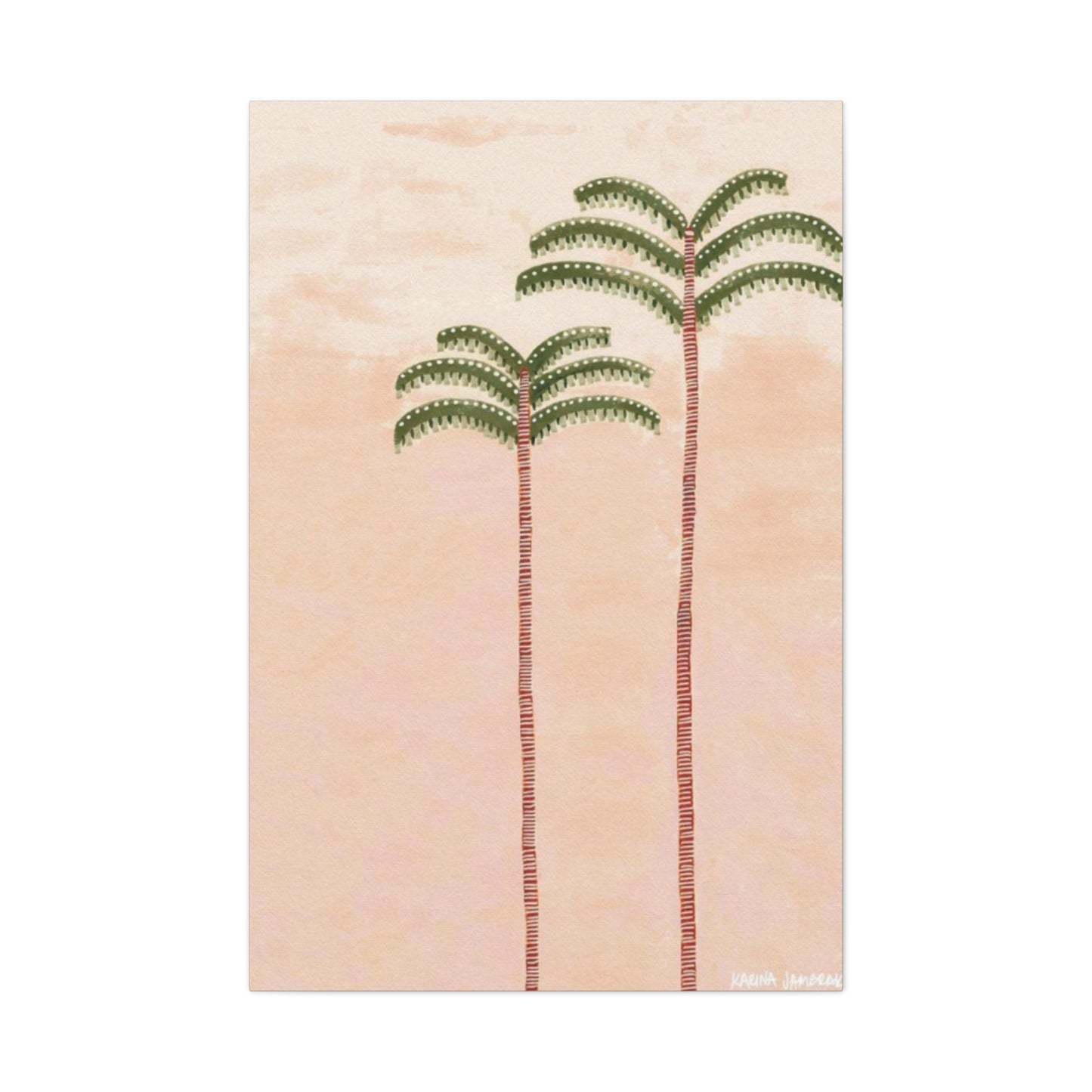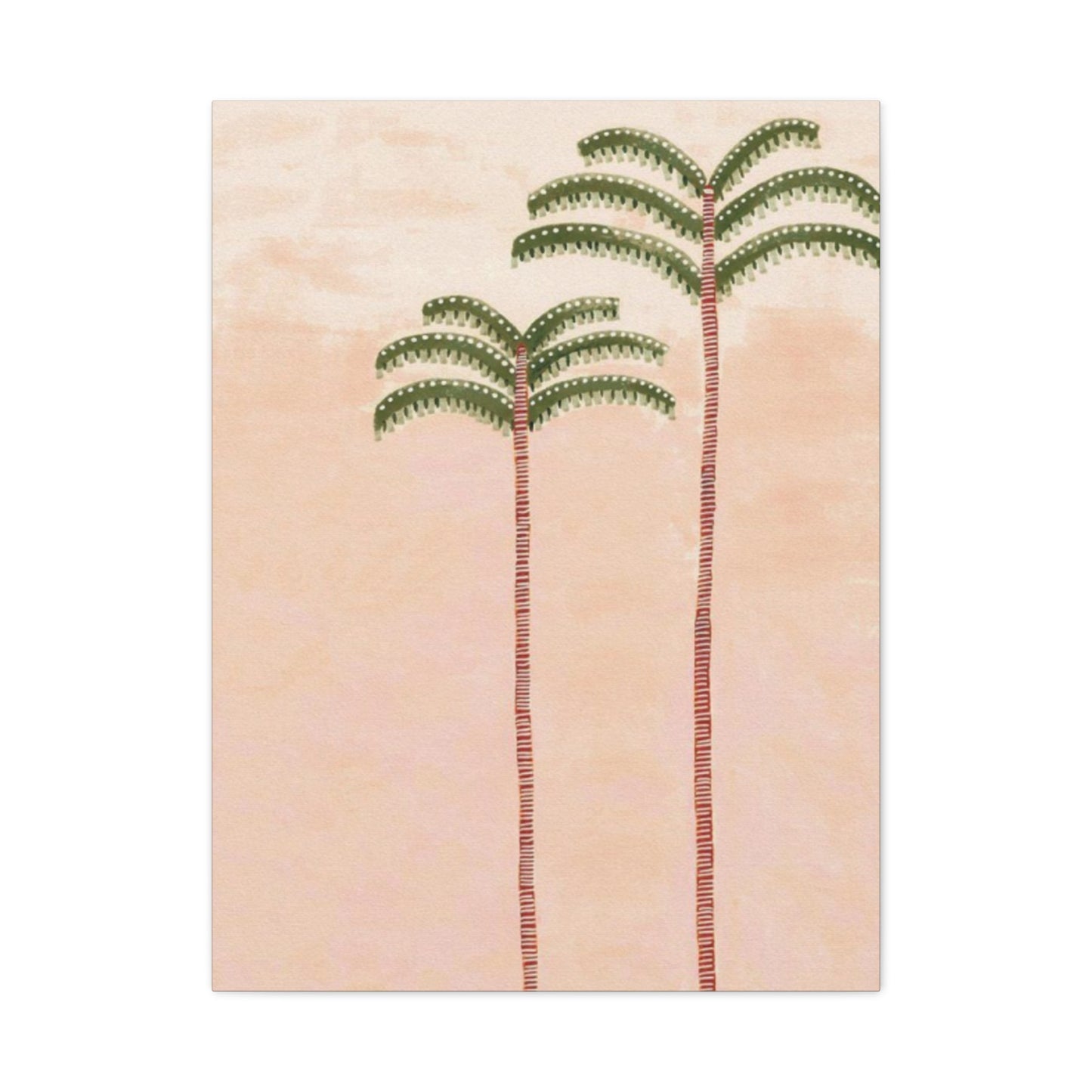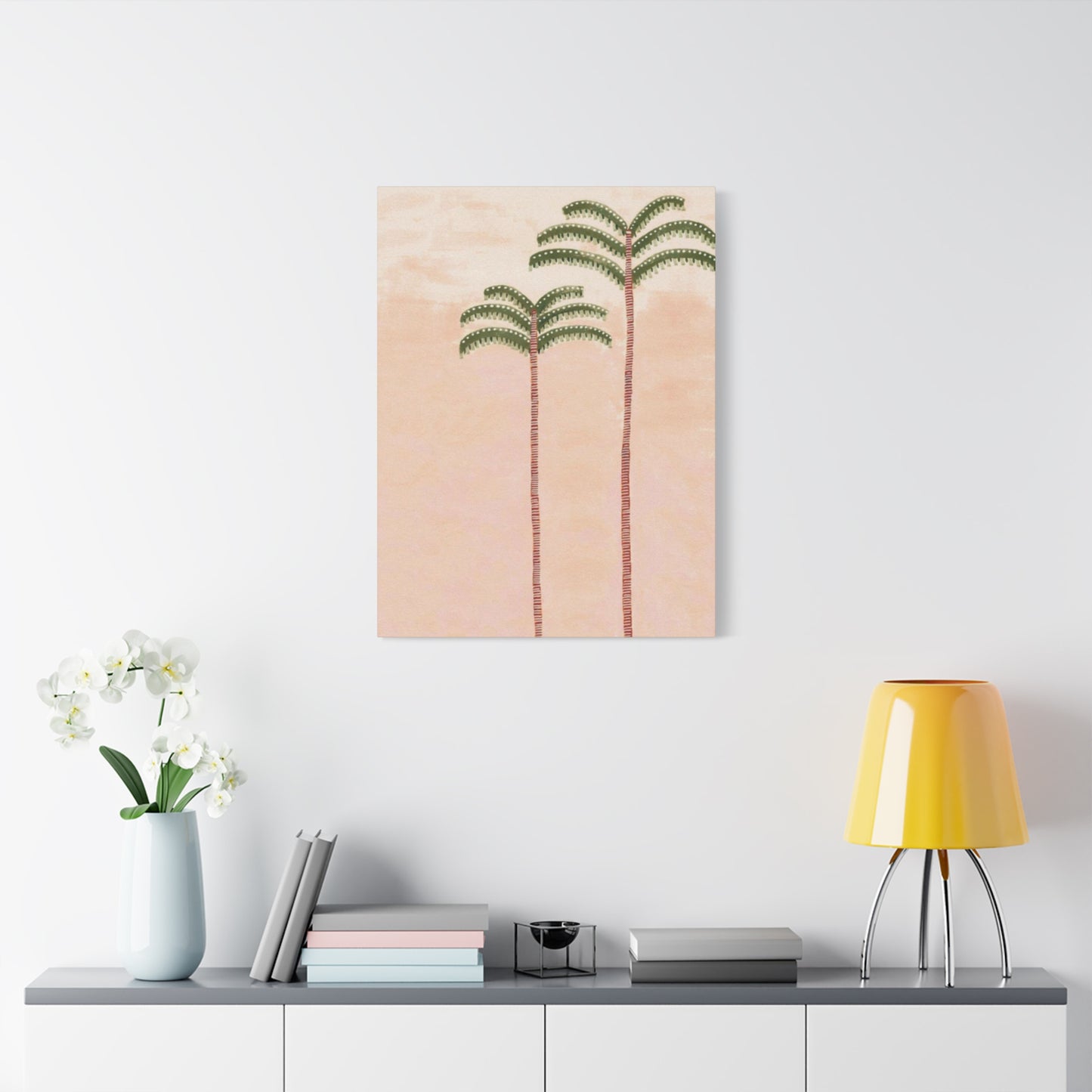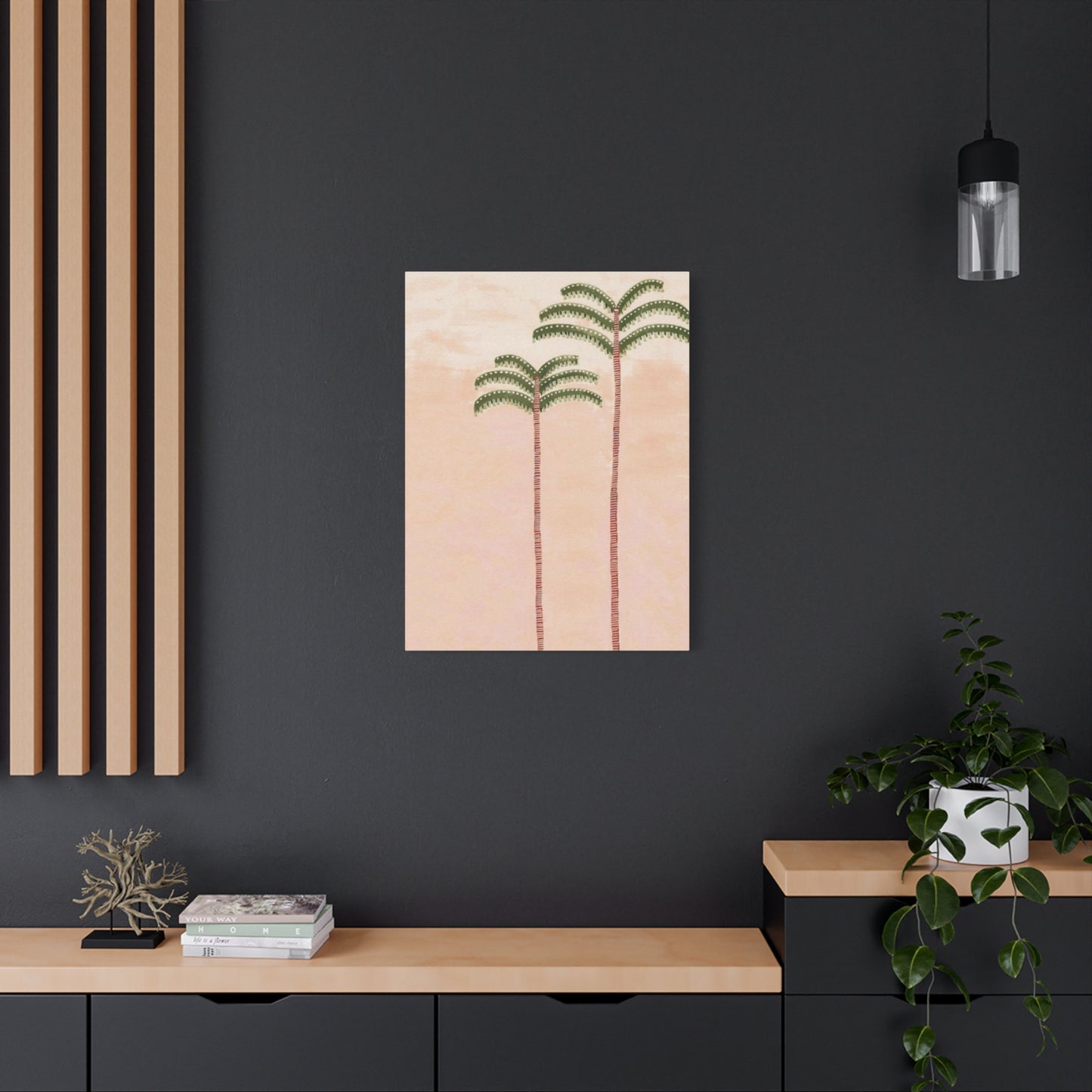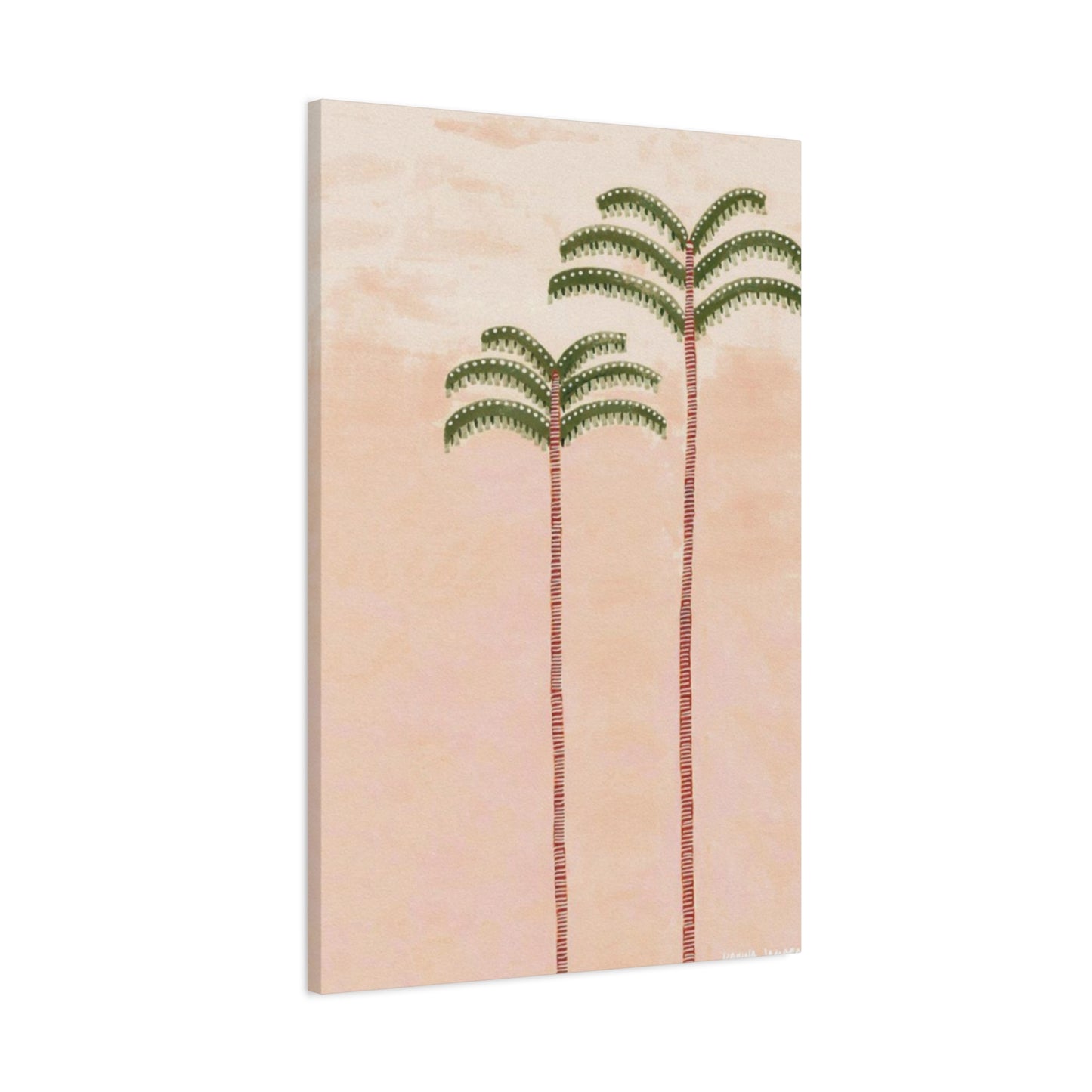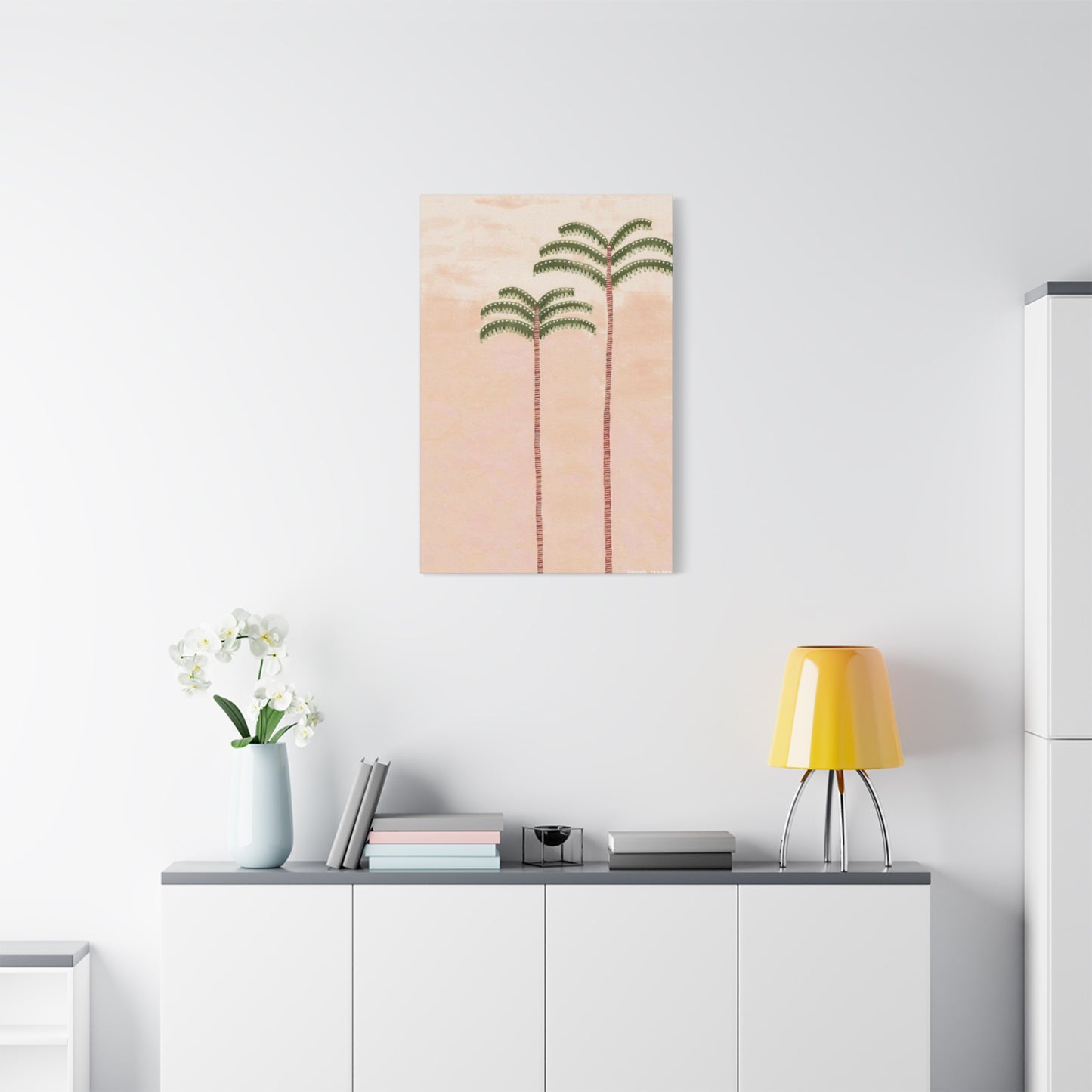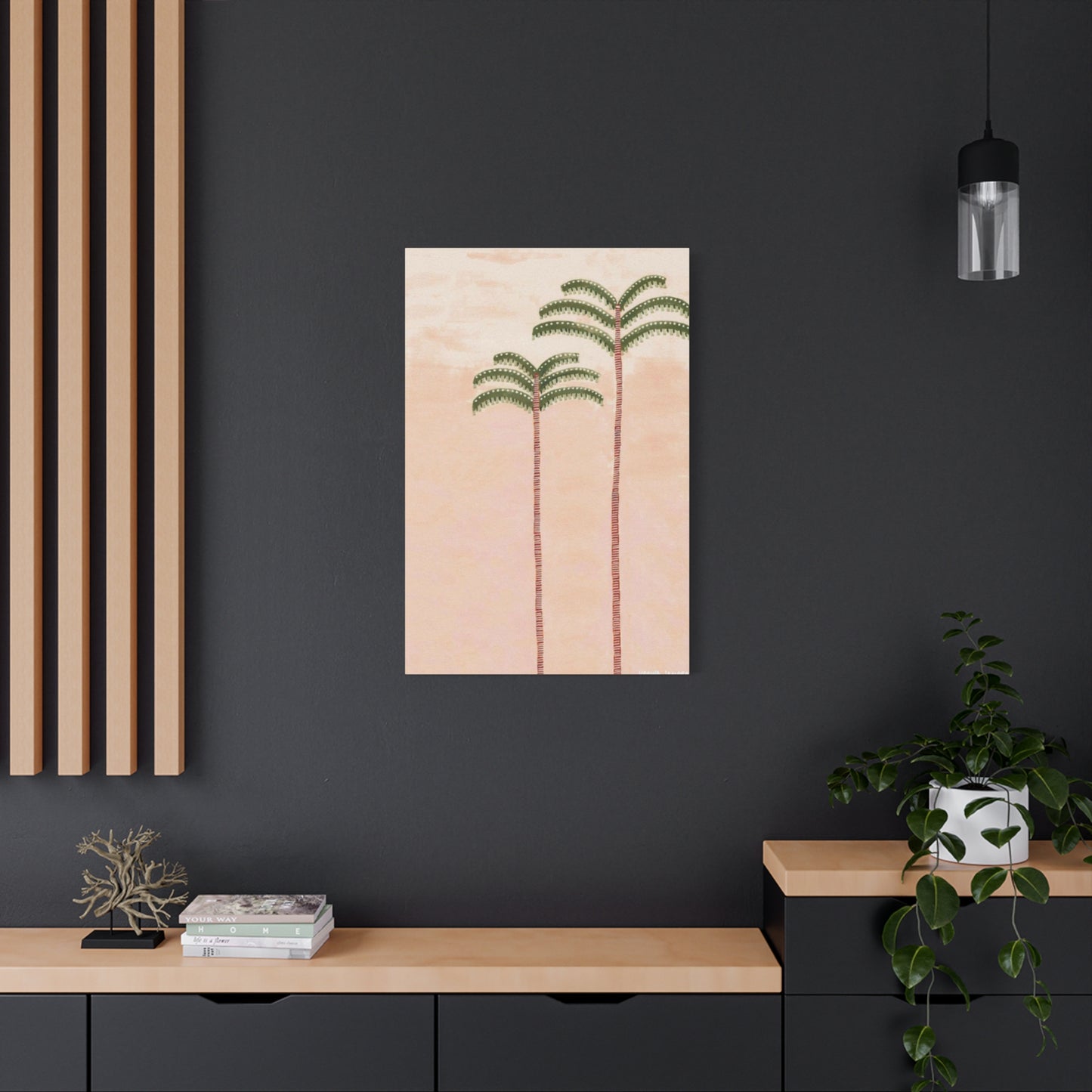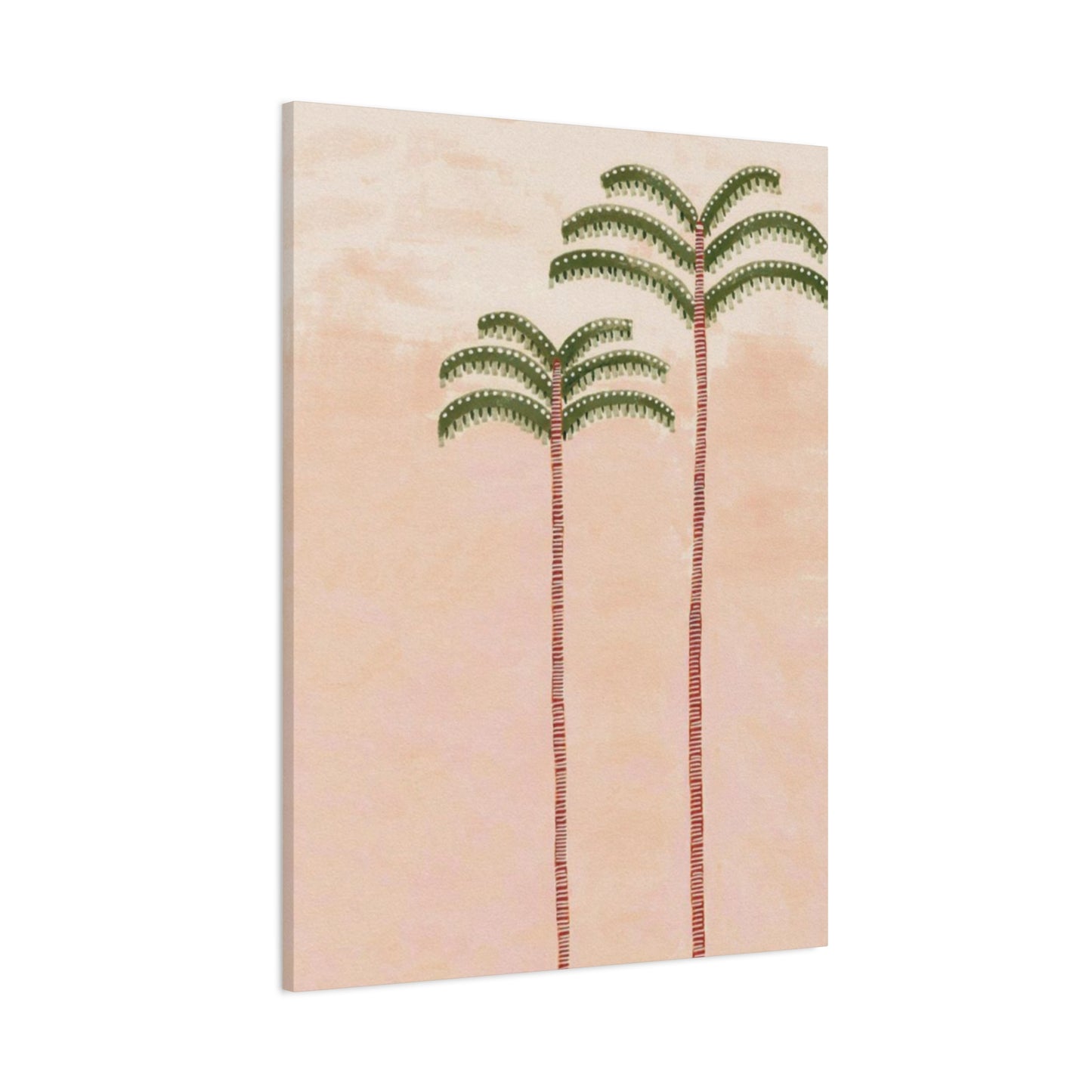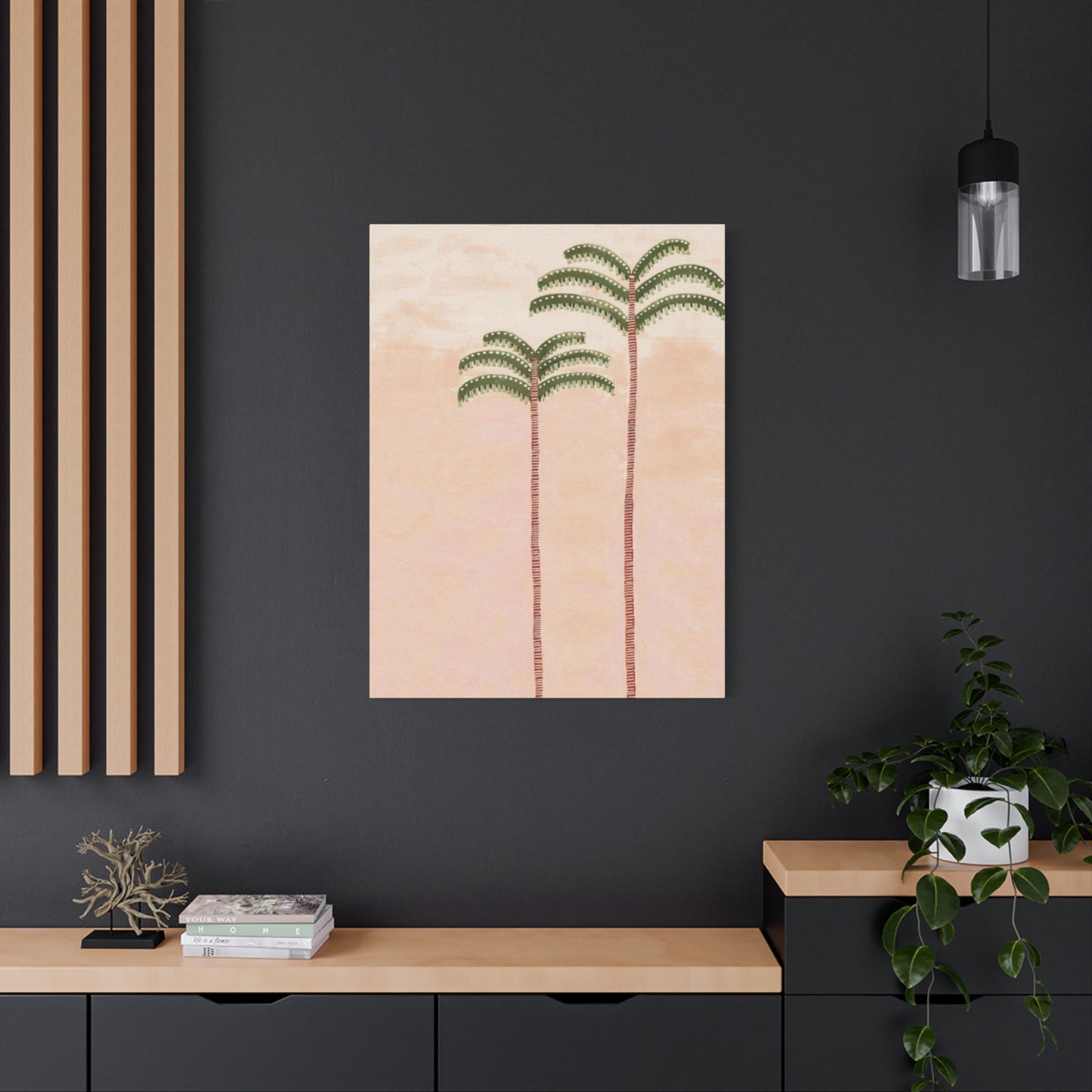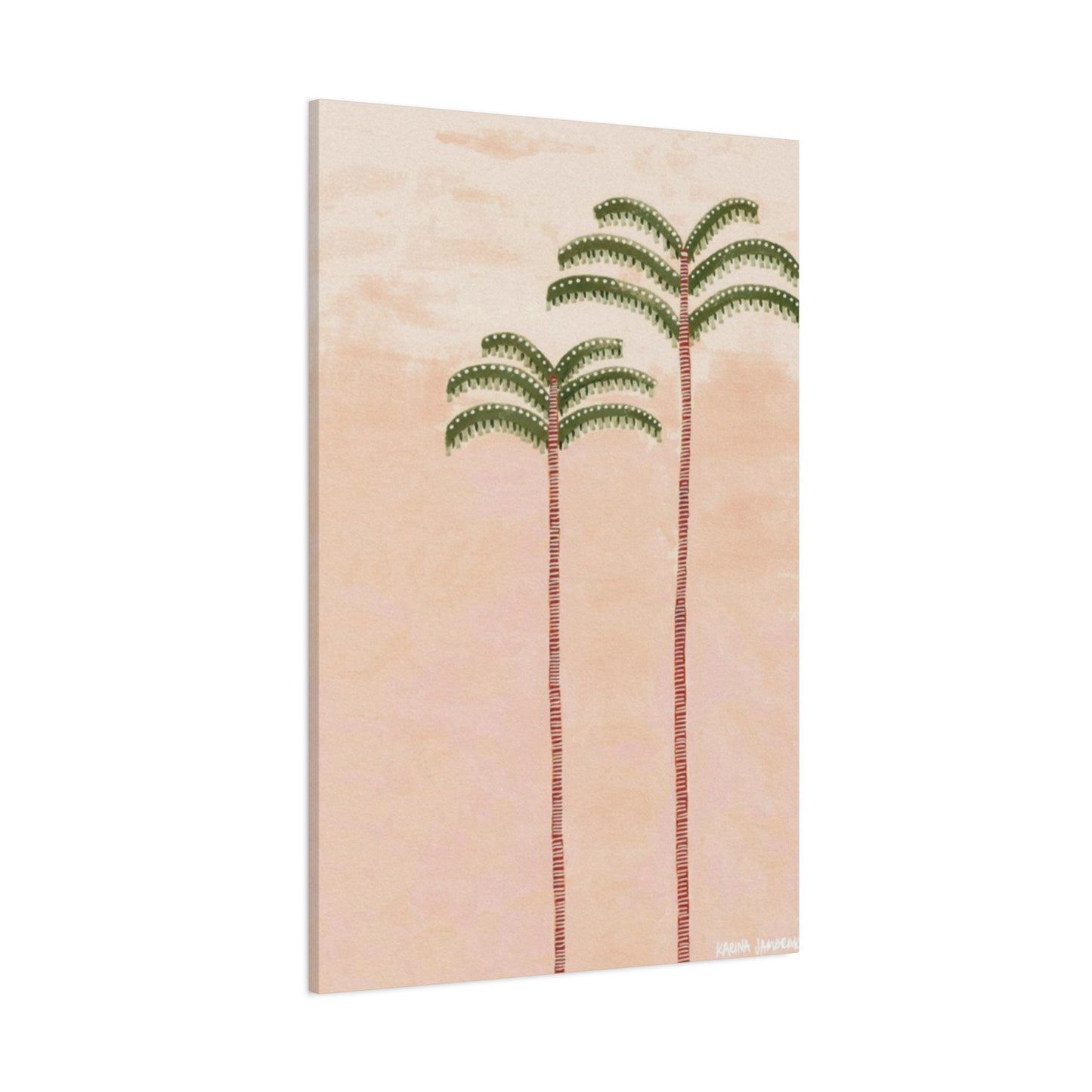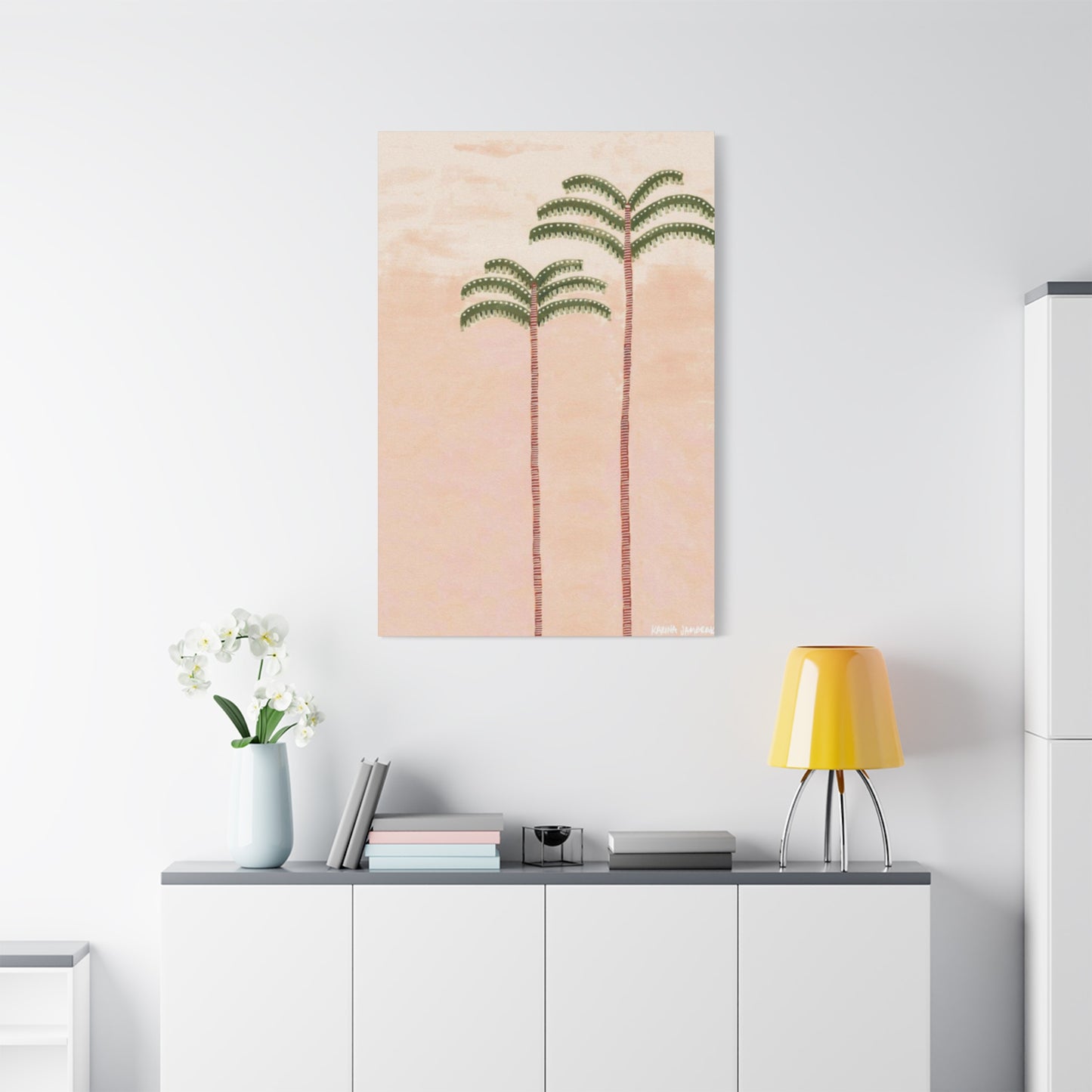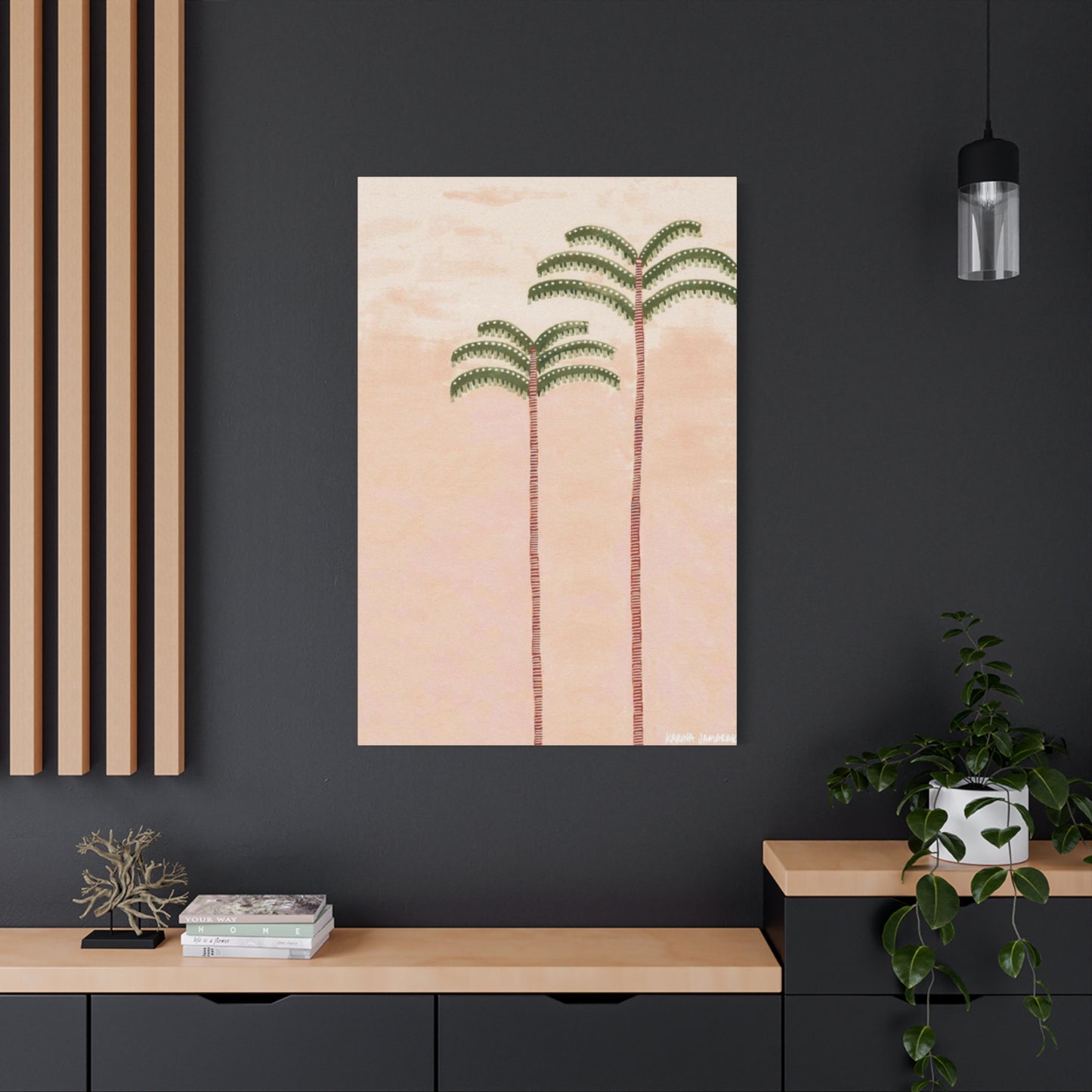Mastering Two Palm Trees Wall Art: Creative Techniques and Artistic Methods
Creating stunning two palm trees wall art has become increasingly popular among artists and homeowners seeking to bring tropical serenity into their living environments. This comprehensive exploration delves into the intricate world of palm tree artistry, examining various techniques, materials, and creative approaches that transform simple sketches into captivating visual masterpieces.
The art of crafting two palm trees wall art extends far beyond basic drawing skills, encompassing a rich tapestry of artistic knowledge that includes understanding proportions, mastering color theory, and developing techniques that capture the essence of these magnificent tropical specimens. Whether you're a beginner artist taking your first steps into botanical illustration or an experienced creator seeking to refine your tropical artwork skills, this detailed guide provides invaluable insights into every aspect of palm tree artistic creation.
From the initial conceptualization phase through the final display considerations, creating two palm trees wall art requires careful attention to numerous elements that contribute to the overall impact and aesthetic appeal of the finished piece. The process involves understanding the natural characteristics of palm trees, studying their growth patterns, observing how light interacts with their fronds, and translating these observations into compelling visual representations that resonate with viewers.
Modern artistic trends have embraced the versatility of palm tree motifs, with artists discovering countless ways to interpret these iconic symbols of tropical paradise. The combination of two palm trees in a single composition offers unique opportunities for creating balanced, harmonious artworks that can serve as striking focal points in contemporary home environments.
Step-by-Step Guide to Creating Two Palm Trees Wall Art
Developing exceptional two palm trees wall art begins with establishing a solid foundation through careful planning and methodical execution. The initial phase involves selecting an appropriate composition that showcases both palm trees effectively while maintaining visual balance and artistic harmony.
Start by choosing the positioning of your two palm trees within the composition, considering how they will interact with each other and the surrounding elements. One effective approach involves placing the palm trees at slightly different distances from the viewer, creating natural depth and dimensional interest. The foreground palm tree can be positioned with more detail and prominence, while the background tree provides supporting visual weight and compositional balance.
Sketching forms the cornerstone of successful palm tree artwork, requiring careful observation of the tree's natural structure and growth characteristics. Begin with basic geometric shapes that define the trunk's general form, typically starting with slightly curved vertical lines that capture the natural lean and bend commonly found in palm trees. The trunk should gradually taper from base to crown, reflecting the organic growth patterns observed in real specimens.
The frond structure demands particular attention, as these elements define much of the palm tree's visual character and appeal. Start by establishing the central growing point where all fronds emerge, then sketch the primary stems that extend outward in various directions. Each frond should follow natural growth patterns, with individual leaflets radiating from the central stem in characteristic feather-like arrangements.
Consider the lighting conditions that will illuminate your two palm trees, as this decision significantly influences the overall mood and atmosphere of the artwork. Strong directional lighting creates dramatic shadows and highlights that emphasize the three-dimensional quality of the trees, while softer, diffused lighting produces more gentle, peaceful effects suitable for relaxing environments.
The background elements require careful consideration to ensure they complement rather than compete with the palm trees for visual attention. Simple gradient backgrounds work effectively for minimalist approaches, while more complex environmental settings can incorporate additional tropical elements such as beaches, ocean horizons, or architectural features that enhance the overall narrative.
Color selection plays a crucial role in establishing the desired emotional response and visual impact of the artwork. Traditional green palettes create realistic representations, while creative color choices can produce more artistic and expressive interpretations that align with specific design aesthetics or personal preferences.
Layer development becomes particularly important when working with more complex compositions, allowing artists to build depth and richness gradually while maintaining control over individual elements. Start with background layers, progressively adding foreground elements while paying careful attention to how each addition affects the overall composition balance.
Detail refinement represents the final phase of the creation process, where artists add finishing touches that elevate the artwork from good to exceptional. This includes refining edge quality, adjusting contrast relationships, fine-tuning color harmonies, and ensuring that all elements work together cohesively to create the intended visual impact.
The Symbolism Behind Palm Trees in Wall Art
Palm trees carry profound symbolic meanings that have evolved across cultures and historical periods, making them powerful subjects for artistic expression and meaningful home decoration. Understanding these symbolic associations enhances both the creation and appreciation of two palm trees wall art, adding layers of meaning that resonate with viewers on deeper psychological and emotional levels.
Throughout history, palm trees have symbolized victory, triumph, and resilience, drawing from their ability to withstand harsh coastal conditions and continue thriving in challenging environments. Ancient civilizations recognized these qualities, incorporating palm motifs into religious art, architectural decorations, and ceremonial objects that celebrated human achievement and spiritual growth.
The association between palm trees and paradise has deep roots in religious and mythological traditions, where these trees often represent eternal life, spiritual enlightenment, and divine blessing. This symbolism makes two palm trees wall art particularly meaningful for creating peaceful, meditative environments that encourage relaxation and contemplation.
In contemporary contexts, palm trees have become universal symbols of vacation, leisure, and escape from daily stress, representing the human desire for tropical getaways and carefree experiences. This modern interpretation makes palm tree artwork especially popular in homes where residents seek to create relaxing retreats that provide psychological respite from busy lifestyles.
The duality represented by two palm trees offers additional symbolic opportunities, often interpreted as companionship, partnership, or the balance between different life aspects. This symbolism makes two palm trees wall art particularly meaningful for couples' bedrooms, family gathering areas, or any environment where harmony and togetherness are valued themes.
Environmental consciousness has added new symbolic dimensions to palm tree art, with these trees representing ecological awareness, climate concerns, and the fragility of tropical ecosystems. Artists increasingly incorporate these themes into their palm tree artwork, creating pieces that serve as both beautiful decorations and subtle environmental statements.
The vertical growth pattern of palm trees symbolizes aspiration, growth, and reaching toward higher goals, making them inspiring subjects for personal development and motivational contexts. This symbolism proves particularly relevant in office environments, creative studios, or study areas where personal growth and achievement are important themes.
Cultural variations in palm tree symbolism provide rich material for artistic interpretation, with different traditions attributing unique meanings and associations to these remarkable trees. Mediterranean cultures often associate palms with hospitality and welcome, while Pacific Island traditions connect them with navigation and ocean voyaging.
The cyclical nature of palm frond growth and renewal symbolizes regeneration, new beginnings, and the continuous cycle of life and death that governs natural systems. This symbolism makes palm tree art meaningful for spaces dedicated to healing, recovery, or personal transformation.
Abundance and prosperity represent another significant symbolic association, derived from the palm tree's ability to provide food, shelter, and materials for human use. This symbolism makes two palm trees wall art appropriate for areas where financial success, career growth, or material abundance are desired outcomes.
Tips for Adding Realism to Your Two Palm Trees Drawing
Achieving convincing realism in two palm trees wall art requires careful attention to numerous visual elements that contribute to the overall believability and impact of the artwork. Successful realistic representation depends on accurate observation, technical skill development, and understanding of how natural lighting conditions affect the appearance of these complex organic forms.
Studying real palm trees provides the foundation for realistic artistic representation, requiring artists to observe how these trees actually grow, bend, and respond to environmental conditions. Spend time examining photographs, visiting botanical gardens, or observing palm trees in their natural habitats to develop a comprehensive understanding of their structural characteristics and visual properties.
Trunk texture represents one of the most distinctive features of palm trees, requiring careful attention to the characteristic patterns created by old frond scars and natural bark formations. These textures vary significantly between different palm species, with some displaying smooth, ringed patterns while others show more irregular, rough surfaces that require different artistic approaches.
The way palm fronds catch and reflect light significantly influences the realistic appearance of the artwork, requiring artists to understand how these flexible, segmented structures interact with various lighting conditions. Individual leaflets create complex shadow patterns that change constantly as the fronds move in response to wind and gravitational forces.
Perspective accuracy becomes crucial when depicting two palm trees at different distances from the viewer, requiring understanding of how size relationships, detail levels, and color intensity change with distance. Foreground trees should display more detail, stronger contrasts, and more saturated colors, while background trees appear smaller, less detailed, and more muted.
Color variation within individual trees adds significant realism, as real palm trees display subtle color differences between older and newer fronds, sun-exposed and shaded areas, and healthy versus stressed plant tissue. These variations create visual interest while contributing to the overall believability of the representation.
Environmental integration enhances realism by showing how palm trees interact with their surroundings, including cast shadows, reflected light from nearby surfaces, and the influence of atmospheric conditions on visual clarity and color saturation. These environmental factors significantly affect the overall appearance and mood of the artwork.
Anatomical accuracy requires understanding palm tree growth structures, including how fronds emerge from the crown, how they arch and bend under their own weight, and how individual leaflets attach to the central stem. Incorrect anatomy immediately reveals artistic inexperience and undermines the overall credibility of the artwork.
Seasonal variations can add temporal realism to palm tree representations, showing how these trees change appearance throughout different times of year. Some palm species display seasonal color changes, frond renewal patterns, or flowering characteristics that provide opportunities for more dynamic and interesting artistic interpretations.
Weather effects offer additional opportunities for realistic representation, showing how palm trees respond to wind, rain, or bright sunlight. These environmental influences create characteristic poses, shadow patterns, and surface reflections that add authenticity and visual interest to the artwork.
Scale relationships between the two palm trees and any additional environmental elements must remain consistent throughout the composition, requiring careful attention to how objects of different sizes appear when viewed from specific distances and angles. Inconsistent scale relationships immediately undermine the realistic credibility of the artwork.
Using Watercolors to Paint Two Palm Trees Wall Art
Watercolor painting offers unique advantages for creating two palm trees wall art, providing transparency, luminosity, and organic flow characteristics that naturally complement the fluid, organic forms of tropical vegetation. The inherent properties of watercolor media make it particularly well-suited for capturing the subtle color variations, atmospheric effects, and natural beauty associated with palm tree subjects.
Paper selection significantly influences watercolor painting success, requiring careful consideration of surface texture, absorbency, and durability characteristics that affect paint application and final appearance. Cold-pressed watercolor paper provides excellent texture for palm tree subjects, offering enough tooth to create interesting dry brush effects while maintaining smooth areas for detailed work.
Color mixing strategies for palm tree subjects involve understanding the complex green variations found in natural palm fronds, which range from bright yellow-greens in new growth to deeper blue-greens in mature foliage. Master artists typically create several green mixtures before beginning painting, ensuring consistent color relationships throughout the artwork.
Wet-on-wet techniques prove particularly effective for creating soft, atmospheric backgrounds that complement the more detailed palm tree subjects without competing for visual attention. This approach allows colors to blend naturally on the paper surface, creating subtle gradations and organic color transitions that enhance the overall tropical mood.
Layering strategies enable watercolor artists to build color intensity and depth gradually while maintaining the transparency that makes watercolor painting distinctive and appealing. Begin with light washes that establish basic color relationships, then progressively add darker values and more detailed elements as the painting develops.
Preserving white paper areas requires careful planning and potentially the use of masking techniques that protect light-valued areas from subsequent paint applications. These reserved whites often represent sun-lit frond edges, bright sky areas, or reflected light that adds sparkle and luminosity to the finished artwork.
Brush selection influences both the painting process and final results, with different brush types providing various mark-making capabilities essential for palm tree representation. Flat brushes work well for broad frond shapes, while round brushes offer versatility for both detailed work and flowing lines that capture the grace of palm tree forms.
Drying time management becomes crucial when working with watercolors, as different moisture levels in the paper create different paint application effects. Understanding when to add new colors to achieve specific blending effects or crisp edges requires experience and careful observation of paper moisture conditions.
Texture creation techniques can simulate the various surface qualities found in palm trees, from smooth trunk areas to the complex, segmented structure of individual fronds. Dry brush techniques, salt applications, and careful color layering can create convincing textural effects that enhance the overall realism of the artwork.
Color temperature relationships help establish depth and atmospheric perspective in two palm trees compositions, with warmer colors appearing to advance toward the viewer while cooler colors recede into the background. Understanding these relationships enables artists to create more convincing spatial depth and visual hierarchy.
Value structure planning ensures that the finished watercolor painting maintains clear contrast relationships and visual organization that guide the viewer's attention effectively through the composition. Establishing strong value patterns early in the painting process helps maintain focus and prevents the artwork from becoming visually confused or weak.
Minimalist vs. Detailed Two Palm Trees Artwork
The choice between minimalist and detailed approaches to two palm trees wall art reflects broader artistic philosophies and practical considerations that significantly influence both the creation process and final aesthetic impact. Each approach offers distinct advantages and appeals to different artistic sensibilities, room design requirements, and personal preferences.
Minimalist palm tree artwork emphasizes essential forms, simplified color palettes, and clean compositional structures that create maximum visual impact through careful reduction and refinement. This approach requires artists to identify the most important visual elements and eliminate unnecessary details that might distract from the core artistic statement.
Simplified line work characterizes minimalist palm tree representations, using confident, flowing strokes that capture the essential gesture and character of the trees without getting lost in complex details. This economy of means often proves more challenging than detailed approaches, requiring strong understanding of fundamental forms and exceptional drawing skills.
Color reduction strategies in minimalist artwork typically involve limiting the palette to a few carefully chosen hues that create harmony and visual coherence while maintaining sufficient contrast for effective composition. These limited color schemes often prove more impactful than complex color arrangements, demonstrating the power of restraint in artistic expression.
Negative space utilization becomes particularly important in minimalist compositions, where unoccupied areas contribute as much to the overall design as the rendered subjects themselves. Thoughtful use of negative space creates breathing room, emphasizes the main subjects, and contributes to the overall sense of calm and sophistication.
Detailed palm tree artwork celebrates the complexity and richness found in natural forms, exploring intricate patterns, subtle color variations, and complex textural relationships that reward close examination and contemplation. This approach appeals to viewers who appreciate technical skill and naturalistic representation.
Botanical accuracy drives many detailed palm tree artworks, requiring extensive observation and understanding of plant structure, growth patterns, and species-specific characteristics that distinguish different palm varieties. This scientific approach often results in artworks that serve educational purposes alongside their aesthetic functions.
Textural exploration opportunities abound in detailed approaches, allowing artists to investigate various surface qualities, pattern relationships, and material properties that create visual interest and tactile appeal. These textural elements often become focal points that draw viewers into closer examination of the artwork.
Atmospheric effects receive more attention in detailed works, with artists exploring how environmental conditions such as humidity, wind, and lighting affect the appearance and mood of palm tree subjects. These atmospheric elements add richness and authenticity that enhance the overall viewing experience.
Time investment considerations differ significantly between minimalist and detailed approaches, with simplified artworks often requiring more conceptual development time while detailed works demand extensive execution time for completion. Artists must balance their available time resources against their artistic goals and client expectations.
Market appeal varies for different approaches, with minimalist works often fitting better into contemporary design schemes while detailed works appeal to viewers who prefer traditional, realistic representations. Understanding target audience preferences helps artists choose appropriate stylistic approaches for their intended markets.
Technical skill requirements differ between approaches, with minimalist work demanding strong fundamental skills in composition and design, while detailed work requires advanced observational abilities and technical rendering skills. Both approaches present unique challenges and learning opportunities for developing artists.
How to Create a Tropical Vibe with Two Palm Trees Wall Art
Establishing an authentic tropical atmosphere through two palm trees wall art involves understanding the visual, emotional, and psychological elements that characterize tropical environments and successfully translating these qualities into compelling artistic representations. The tropical aesthetic encompasses more than just palm tree imagery, requiring attention to color schemes, compositional elements, and stylistic choices that collectively create the desired environmental mood.
Color psychology plays a fundamental role in tropical aesthetic development, with warm, saturated hues evoking the intense sunlight and vibrant natural colors associated with tropical regions. The strategic use of blues, turquoises, coral pinks, sunset oranges, and various green tones creates color harmonies that immediately suggest tropical paradise to viewers.
Atmospheric perspective techniques help establish the hazy, humid atmosphere characteristic of tropical environments, where distant objects appear softer and more muted due to moisture and heat in the air. This atmospheric quality can be simulated through subtle color shifts, reduced contrast in background elements, and soft edge treatment that suggests the dreamy quality of tropical landscapes.
Light quality representation becomes crucial for authentic tropical feeling, as tropical regions experience intense, directional sunlight that creates strong contrasts between illuminated and shadowed areas. Understanding how this distinctive lighting affects palm trees and surrounding elements enables artists to create convincing tropical illumination effects.
Environmental context expansion beyond just palm trees helps establish comprehensive tropical settings that support and enhance the main subjects. Additional elements such as distant ocean horizons, beach foregrounds, tropical flowers, or architectural details can provide contextual support that strengthens the overall tropical theme.
Movement suggestion through artistic techniques can simulate the constant gentle breezes common in tropical environments, showing palm fronds in graceful motion that suggests the relaxing rhythm of tropical life. This sense of movement adds life and energy to static artworks while contributing to the overall environmental authenticity.
Scale relationships between natural and architectural elements help establish the grandeur and expansiveness often associated with tropical paradise imagery. Properly scaled palm trees in relation to buildings, people, or other reference objects create convincing environmental proportions that enhance the tropical fantasy.
Seasonal timing considerations influence the specific tropical characteristics displayed in the artwork, as different seasons in tropical regions offer varying color palettes, vegetation conditions, and atmospheric qualities that can be incorporated for added authenticity and interest.
Compositional balance between foreground and background elements helps create the depth and spatial organization characteristic of tropical landscape views, where multiple layers of vegetation, water, and sky create complex but harmonious visual arrangements that draw viewers into the scene.
Cultural elements integration can add authentic regional character to tropical-themed artworks, incorporating architectural styles, decorative patterns, or lifestyle elements specific to particular tropical locations that enhance the cultural authenticity and narrative interest of the piece.
Emotional resonance development ensures that the tropical vibe extends beyond mere visual representation to create genuine feelings of relaxation, escape, and positive emotion that viewers associate with tropical vacation experiences and lifestyle aspirations.
Combining Two Palm Trees with Sunset Backgrounds in Art
The combination of palm tree silhouettes against dramatic sunset backgrounds creates one of the most iconic and emotionally powerful tropical art compositions, leveraging the natural drama of changing light conditions to enhance the romantic and peaceful associations of palm tree imagery. This artistic approach requires understanding both the technical and aesthetic challenges involved in successfully integrating these complementary elements.
Sunset color progression follows predictable patterns that artists must understand to create convincing and beautiful background treatments. The sequence typically begins with warm yellows and oranges near the horizon, gradually transitioning through coral and pink tones, and finally reaching deeper purples and blues in the upper sky areas.
Silhouette treatment of palm trees against bright sunset backgrounds requires careful attention to edge quality and internal detail handling. While the trees appear as dark shapes against the bright sky, successful artworks maintain enough subtle detail and variation to prevent the silhouettes from becoming flat, uninteresting black shapes.
Atmospheric perspective effects become particularly dramatic during sunset conditions, as the warm, humid air common in tropical environments creates distinctive haze effects that soften distant objects and create beautiful color shifts throughout the atmospheric layers visible in the composition.
Compositional balance considerations become crucial when combining the vertical emphasis of palm trees with the horizontal orientation of sunset skies, requiring careful placement and scaling of elements to create harmonious relationships that strengthen rather than compete with each other.
Reflection opportunities arise when sunset scenes include water elements, creating chances to mirror both the palm trees and colorful sky in reflective surfaces that double the visual impact while adding complexity and interest to the overall composition.
Lighting consistency requires understanding how the intense, warm light of sunset conditions affects the appearance of palm trees and other environmental elements, creating characteristic rim lighting, warm color casts, and distinctive shadow patterns that contribute to the overall authenticity of the scene.
Time-specific accuracy involves representing the particular light conditions and atmospheric qualities present during different phases of sunset, from the initial golden hour through the final twilight moments when the sky displays its most dramatic color combinations.
Foreground integration challenges arise when incorporating additional elements such as beach scenes, water features, or architectural elements that must be lit consistently with the dramatic sunset conditions while maintaining their individual character and visual interest.
Seasonal variations in sunset characteristics provide opportunities for creating different moods and color relationships within the same basic compositional approach, as sunset colors and timing change throughout the year in tropical locations.
Emotional impact maximization requires understanding how the combination of palm trees and sunset imagery affects viewers psychologically, tapping into deep associations with relaxation, romance, and escape that make these compositions particularly popular for residential and hospitality applications.
Technical execution strategies vary depending on the chosen medium, with each artistic medium offering different advantages and challenges for representing the complex color relationships and atmospheric effects characteristic of tropical sunset scenes.
Best Tools and Materials for Drawing Palm Trees
Selecting appropriate tools and materials significantly influences both the drawing process and final results when creating two palm trees wall art, requiring understanding of how different supplies affect line quality, texture representation, and overall artistic expression. The choice of drawing materials should align with artistic goals, skill level, and intended final presentation format.
Pencil selection forms the foundation of most palm tree drawing projects, with different graphite hardnesses offering varying line qualities and tonal capabilities. Harder pencils create lighter, more precise lines suitable for initial sketching and fine details, while softer pencils produce darker, richer tones ideal for shadow areas and bold statements.
Paper characteristics dramatically affect drawing results, with surface texture, weight, and color influencing both the drawing process and final appearance. Smooth papers work well for detailed botanical illustrations, while textured surfaces provide interesting effects for more expressive, artistic interpretations of palm tree subjects.
Blending tools enable smooth tonal transitions and atmospheric effects that enhance the three-dimensional quality of palm tree drawings. Blending stumps, tortillons, and even finger blending can create soft gradations that simulate natural lighting effects and atmospheric perspective.
Eraser varieties serve different functions in palm tree drawing, from precision erasing for highlight creation to broad area cleaning for major compositional adjustments. Kneaded erasers offer particular versatility, allowing artists to create subtle highlights and texture effects while maintaining clean drawing surfaces.
Charcoal materials provide rich, dark tones and interesting textural possibilities that work particularly well for dramatic palm tree representations with strong contrast relationships. Both vine charcoal and compressed charcoal offer different mark-making characteristics suitable for various artistic approaches.
Colored pencil techniques expand creative possibilities for palm tree artwork, allowing artists to explore realistic color relationships or creative interpretations that enhance the tropical appeal of the subjects. Quality colored pencils offer better pigmentation and blending capabilities that produce professional results.
Digital drawing tools provide modern alternatives that offer advantages such as easy corrections, layer work capabilities, and infinite experimental possibilities without material waste. Pressure-sensitive tablets with appropriate software can simulate traditional media while providing additional creative options.
Fixative application protects finished drawings from smudging and degradation over time, requiring understanding of when and how to apply these protective coatings without affecting the final appearance or archival quality of the artwork.
Storage and presentation considerations influence material choices, as some drawing media require specific handling and display conditions to maintain their appearance and longevity. Understanding these requirements helps artists choose materials appropriate for their intended artwork lifespan and display conditions.
Budget considerations affect material selection, with artists needing to balance quality requirements against available resources while building collections of supplies that support their artistic development and production goals.
Quality assessment criteria help artists evaluate different material options based on performance characteristics, durability, and suitability for specific techniques and artistic goals that align with their palm tree artwork objectives.
How to Make Two Palm Trees the Focal Point of Your Wall Art
Creating effective focal point emphasis requires understanding fundamental design principles that guide viewer attention and create visual hierarchy within artistic compositions. When featuring two palm trees as the primary subjects, artists must employ various techniques that ensure these elements command attention while maintaining overall compositional harmony and balance.
Contrast manipulation represents one of the most powerful tools for establishing focal point prominence, using differences in value, color, size, or texture to make the palm trees visually distinct from their surrounding environment. Strong contrast relationships immediately draw the eye to the intended focal areas while creating dynamic visual interest.
Positioning strategies influence how effectively the palm trees function as focal points, with placement along compositional power points or intersection areas naturally attracting viewer attention. Understanding the rule of thirds and other compositional guidelines helps artists position their palm trees for maximum visual impact.
Size relationships between the palm trees and other compositional elements affect focal point strength, with larger elements naturally commanding more attention than smaller ones. Careful scaling ensures the palm trees maintain appropriate prominence without overwhelming other important compositional elements.
Color saturation differences can effectively isolate focal point areas, using more vibrant, saturated colors for the palm trees while employing more muted tones for background and supporting elements. This color strategy creates natural visual separation and emphasis.
Edge quality variations help establish focal point hierarchy, with sharper, more defined edges attracting attention while softer edges recede into secondary importance. Strategic edge control guides viewer attention through the composition in predetermined patterns.
Lighting direction and intensity can spotlight focal point areas while leaving supporting elements in relatively subdued illumination. Dramatic lighting creates natural emphasis that supports the compositional hierarchy without appearing artificial or forced.
Detail concentration focuses the highest level of artistic refinement and complexity within the focal point areas, reserving simpler treatment for supporting elements that should not compete for primary attention. This detail hierarchy reinforces the intended visual emphasis.
Directional elements such as leading lines, pointing shapes, or implied movement can guide viewer attention toward the palm trees while creating dynamic compositional flow that adds energy and visual interest to the overall artwork.
Background simplification ensures that environmental elements support rather than compete with the focal point palm trees, using simplified forms, muted colors, and reduced detail that provide contextual support without visual distraction.
Repetition and variation patterns can reinforce focal point emphasis while creating visual rhythm and unity throughout the composition. Subtle repetition of shapes, colors, or textures creates cohesive design while variation maintains visual interest.
Isolation techniques separate focal point elements from their surroundings through the strategic use of negative space, color differences, or value contrasts that create clear visual separation and emphasis without appearing artificial or heavy-handed.
Adding Texture and Depth to Two Palm Trees Drawings
Texture representation transforms flat drawings into convincing three-dimensional illusions that engage viewers and create tactile appeal even within two-dimensional artistic media. Palm trees offer rich opportunities for textural exploration, from the characteristic patterns of trunk surfaces to the complex, segmented structure of individual fronds that create distinctive visual and tactile qualities.
Surface texture analysis requires careful observation of real palm tree characteristics, studying how different species display unique bark patterns, frond structures, and growth characteristics that distinguish them from other tree types. This observational foundation enables accurate artistic representation that convinces viewers of the artwork's authenticity.
Cross-hatching techniques provide traditional methods for creating tonal variations and surface textures through systematic line arrangements that simulate various material qualities. Different cross-hatching patterns, densities, and orientations can represent everything from smooth trunk surfaces to rough, weathered bark textures.
Stippling methods use collections of dots or small marks to build up tonal areas and textural effects that work particularly well for representing certain palm tree surface qualities. Varying dot sizes, densities, and arrangements creates different textural effects suitable for different palm tree elements.
Blending techniques create smooth tonal transitions that suggest rounded forms and atmospheric effects essential for convincing three-dimensional representation. Understanding when to blend and when to preserve distinct marks helps create varied textural interest throughout the drawing.
Atmospheric perspective principles help establish depth by showing how distance affects the appearance of texture, detail, and contrast in different areas of the composition. Foreground textures appear sharp and high-contrast, while background textures become softer and more subdued.
Layering strategies build complex textural effects gradually, starting with basic forms and progressively adding surface details, highlight effects, and refinements that create rich, convincing surface qualities without becoming overworked or confused.
Light direction considerations influence how textures appear under different illumination conditions, with raking light emphasizing surface irregularities while direct illumination flattens textural appearance. Understanding these lighting effects enhances textural representation.
Scale relationships between different textural elements help maintain visual coherence and prevent textural competition that can create visual confusion. Establishing textural hierarchy ensures that surface details support rather than overwhelm the overall compositional goals.
Tool selection affects textural possibilities, with different drawing implements offering various mark-making capabilities suitable for representing different surface qualities. Experimenting with various tools expands the range of textural effects available to artists.
Patience and observation requirements for successful texture work demand careful attention to detail and willingness to invest time in gradually building up complex surface effects that contribute to the overall quality and impact of the finished artwork.
Incorporating Two Palm Trees into Boho Wall Decor
Bohemian aesthetic principles embrace eclectic mixing, natural materials, global influences, and artistic freedom that makes palm tree artwork particularly compatible with this popular decorating style. Understanding how to adapt palm tree art to complement boho environments requires appreciation for the key characteristics that define this distinctive decorating approach.
Color palette integration focuses on the warm, earthy tones and jewel-like accents characteristic of bohemian environments, adapting palm tree artwork to feature colors that harmonize with existing decor elements while maintaining the tropical character of the subjects.
Mixed media approaches align well with boho aesthetics, encouraging combination of different artistic techniques, materials, and cultural influences that create rich, layered visual experiences. Palm tree artwork can incorporate fabric elements, metallic accents, or collage techniques that enhance boho compatibility.
Global inspiration integration reflects the bohemian appreciation for diverse cultural influences, allowing artists to incorporate decorative patterns, color combinations, or stylistic elements from various tropical cultures into their palm tree representations.
Handmade quality emphasis celebrates the artisanal character valued in bohemian environments, encouraging artistic approaches that highlight hand-crafted qualities, visible tool marks, and organic irregularities that distinguish handmade art from mass-produced decorations.
Natural material integration can incorporate actual palm fronds, shells, sand, or other tropical materials into mixed media palm tree artworks that provide authentic textural elements and cultural references that enhance boho appeal.
Layered composition strategies reflect boho decorating principles that favor complex, layered arrangements over minimalist simplicity. Palm tree artwork can be designed to work within grouped arrangements that include multiple artworks, textiles, and decorative objects.
Vintage and antique integration opportunities allow palm tree artwork to incorporate aged finishes, distressed techniques, or vintage-inspired design elements that align with boho preferences for objects with history and character.
Textile influence incorporation draws inspiration from the rich textile traditions valued in bohemian environments, potentially incorporating fabric patterns, weaving textures, or embroidery techniques into palm tree artistic representations.
Spiritual and symbolic integration acknowledges the bohemian appreciation for meaningful objects and spiritual symbols, emphasizing the symbolic aspects of palm trees that relate to peace, growth, and connection with nature.
Artistic freedom celebration encourages experimental approaches and creative rule-breaking that aligns with bohemian values of individual expression and artistic authenticity over conventional decorating rules.
Scale and proportion flexibility allows boho-style palm tree artwork to work effectively in various sizes and arrangements, from large statement pieces to smaller elements within complex gallery wall arrangements that characterize bohemian decorating approaches.
DIY Ideas: Two Palm Trees Wall Art on Canvas
Canvas-based palm tree projects offer excellent opportunities for beginning and intermediate artists to create professional-looking artwork while exploring various techniques and approaches suitable for different skill levels and artistic goals. The versatility of canvas as a support material enables numerous creative possibilities that can be adapted to personal preferences and available resources.
Canvas preparation establishes the foundation for successful painting projects, requiring understanding of priming techniques, surface textures, and preparation methods that affect paint application and final appearance. Proper preparation ensures paint adhesion and archival quality that maintains artwork appearance over time.
Acrylic painting techniques provide accessible, versatile options for canvas-based palm tree artwork, offering quick drying times, easy cleanup, and excellent color mixing capabilities that make them ideal for DIY projects. Understanding basic acrylic properties helps artists achieve desired effects efficiently.
Sketching and composition planning on canvas requires techniques for establishing basic design elements without interfering with subsequent paint applications. Light pencil sketching, charcoal transfer methods, or direct painting approaches offer different options for different artistic preferences.
Color mixing strategies for palm tree subjects involve understanding how to create various green mixtures, tropical sky colors, and earth tones that provide realistic or stylized color palettes suitable for different artistic interpretations and decor requirements.
Brush technique development enables artists to create various mark-making effects essential for convincing palm tree representation, from broad frond shapes to detailed texture work that adds visual interest and authenticity to the finished artwork.
Layering approaches build color richness and depth gradually while allowing for corrections and adjustments throughout the painting process. Understanding when to allow layers to dry and when to work wet-into-wet creates different effects suitable for various palm tree elements.
Texture creation methods simulate various surface qualities found in palm trees, using techniques such as dry brushing, impasto applications, or additive materials that create convincing textural effects within the painted surface.
Background development strategies ensure that environmental elements complement rather than compete with the main palm tree subjects, using appropriate color relationships, value structures, and detail levels that support the overall compositional goals.
Finishing techniques protect completed canvas artworks while enhancing their presentation quality, including varnish applications, edge treatments, and mounting considerations that prepare the artwork for display and long-term enjoyment.
Troubleshooting common problems helps DIY artists overcome typical challenges encountered during canvas painting projects, from color mixing issues to composition problems that can be corrected with appropriate techniques and approaches.
Project documentation and sharing opportunities allow DIY artists to record their progress, share results with others, and build portfolios of work that demonstrate artistic development and achievement over time.
The Perfect Color Palettes for Tropical Palm Tree Art
Color selection fundamentally influences the emotional impact and visual appeal of palm tree artwork, requiring understanding of color theory principles, natural observation, and aesthetic considerations that create harmonious and engaging tropical representations. Successful color palettes support the artistic goals while enhancing the tropical character of the subjects.
Natural color observation provides the foundation for realistic palm tree color palettes, requiring study of how different lighting conditions, seasonal changes, and environmental factors affect the appearance of palm trees in their native habitats. This observational base ensures authentic color relationships.
Warm color dominance characterizes many successful tropical palm tree palettes, emphasizing yellows, oranges, and warm greens that suggest the intense sunlight and warm climate associated with tropical environments. These warm tones create immediate psychological associations with tropical paradise.
Cool color accents provide balance and visual interest within predominantly warm tropical color schemes, using blues, purples, and cool greens to represent shadow areas, water elements, or sky components that add depth and contrast to the overall color harmony.
Complementary color relationships create dynamic visual interest through strategic use of opposite colors that enhance each other's intensity and impact. Orange-blue, yellow-purple, and red-green combinations offer powerful possibilities for tropical palm tree artwork.
Analogous color schemes use related colors that create harmonious, peaceful effects suitable for relaxing environments. Various green combinations, warm earth tones, or cool blue variations can create sophisticated color relationships with subtle visual interest.
Conclusion
Mastering two palm trees wall art is a rewarding journey that combines creativity, technical skill, and an appreciation for nature’s iconic beauty. Palm trees symbolize relaxation, tropical vibes, and resilience, making them a popular subject in artistic expression. Through exploring various creative techniques and artistic methods, you can capture the elegance and tranquility these trees bring to any environment, turning simple imagery into captivating works of art.
Whether working with watercolor, acrylics, digital media, or mixed media, the depiction of two palm trees offers endless opportunities for experimentation. From detailed, realistic renderings to abstract and stylized interpretations, artists can play with color, texture, light, and composition to evoke different moods and atmospheres. Techniques like layering, blending, and using varied brush strokes enhance the natural textures of palm fronds and the dynamic forms of trunks, resulting in vibrant and engaging pieces.
Beyond technical execution, two palm trees wall art often conveys symbolic meanings—balance, companionship, and serenity. These themes resonate strongly in home décor, where such artwork creates a calming, tropical ambiance. Placing these pieces strategically in living rooms, bedrooms, or outdoor-inspired spaces can evoke feelings of escape and peacefulness, transforming your environment into a serene retreat.
From a design standpoint, palm tree art complements a range of interior styles including coastal, bohemian, modern, and rustic. Its versatility allows it to function as a bold statement piece or a subtle accent, depending on the scale and color palette used. Combining two palm trees with natural materials such as wood, rattan, or linen enhances the organic feel and ties the art seamlessly into your décor.
In conclusion, mastering two palm trees wall art involves a blend of artistic technique and creative vision that captures both the physical beauty and symbolic power of these iconic trees. Whether you’re an artist seeking to refine your skills or a décor enthusiast looking to enhance your space, this subject offers endless inspiration and versatility. Embrace the creative process and let two palm trees art bring warmth, balance, and tropical elegance into your home.

















